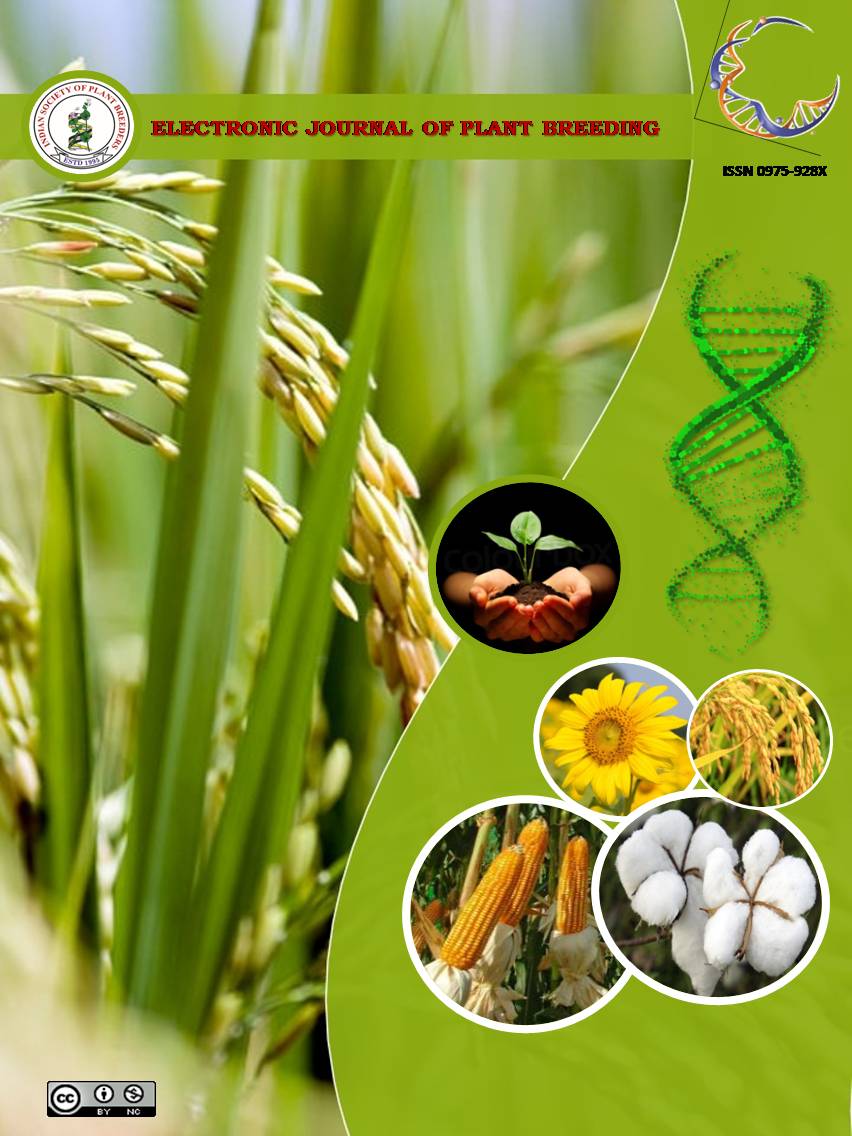Genetic variability and character association for earliness, yield and its contributing traits in F2 population of rice (Oryza sativa L.)
Abstract
Variability studies revealed that considerable amount of variability exist in the F2 population of rice cross CB 08504 × Prasanna through high values of PCV and GCV for characters like number of filled grains per panicle, spikelet fertility percentage and single plant yield. High PCV and moderate GCV was observed for number of productive tillers per plant while moderate PCV and GCV was recorded for days to first flowering and harvest index. High heritability coupled with high genetic advance as percent of mean was observed for the characters namely number of filled grains per panicle, number of productive tillers per plant, spikelet fertility percentage and single plant yield in the F2 population. The traits days to first flowering, number of productive tillers per plant, panicle length, number of filled grains per panicle, spikelet fertility percentage and harvest index were showing significant and positive correlation with single plant yield. The F2 population of CB 08504 × Prasanna performed better for earliness, yield and yield associated traits and could be utilised in future breeding programs to meet the increasing demand of rice.

It is certified that:
- The corresponding author is fully responsible for any disputes arising due to the publication of his/her manuscript.
- The article has been seen by all the authors who are satisfied with its form and content.
- The sequence of names of authors in the by-line is as per their relative contribution to this experiment, giving due credit to all scientists who made notable contribution to it.
- All the authors fully understand that inclusion of any other co-authors or exclusion of any co-authors is not possible once the article has been submitted to the journal.
- The corresponding author takes full responsibility for this article.
- The address of the organization where the research was conducted is given.
- The article is exclusive for this journal, and the results reported here have not been sent (and will not be sent during its consideration by this journal) for publication in any other journal.
- Authors agree to abide by the objective comments of referees and do agree to modify the article into a short note as per the recommendation, for publication in the Electronic Journal of Plant Breeding.
- If published in Electronic Journal of Plant Breeding, the copyright of this article would vest with the Indian Society of Plant Breeders, who will have the right to enter into any agreement with any organization in India or abroad engaged in reprography, photocopying, storage and dissemination of information contained in it, and neither we nor our legal heirs will have any claims on royalty.


